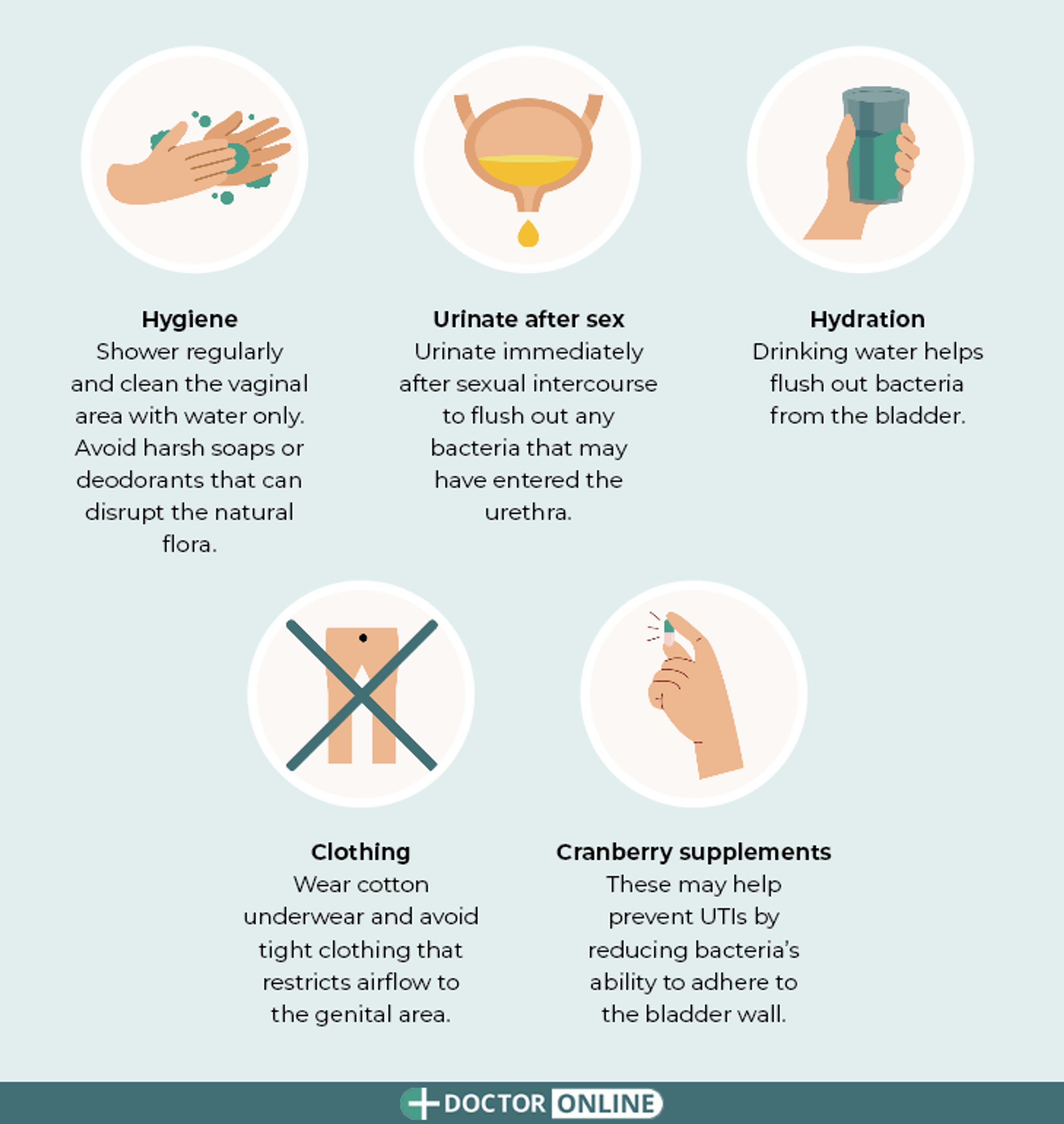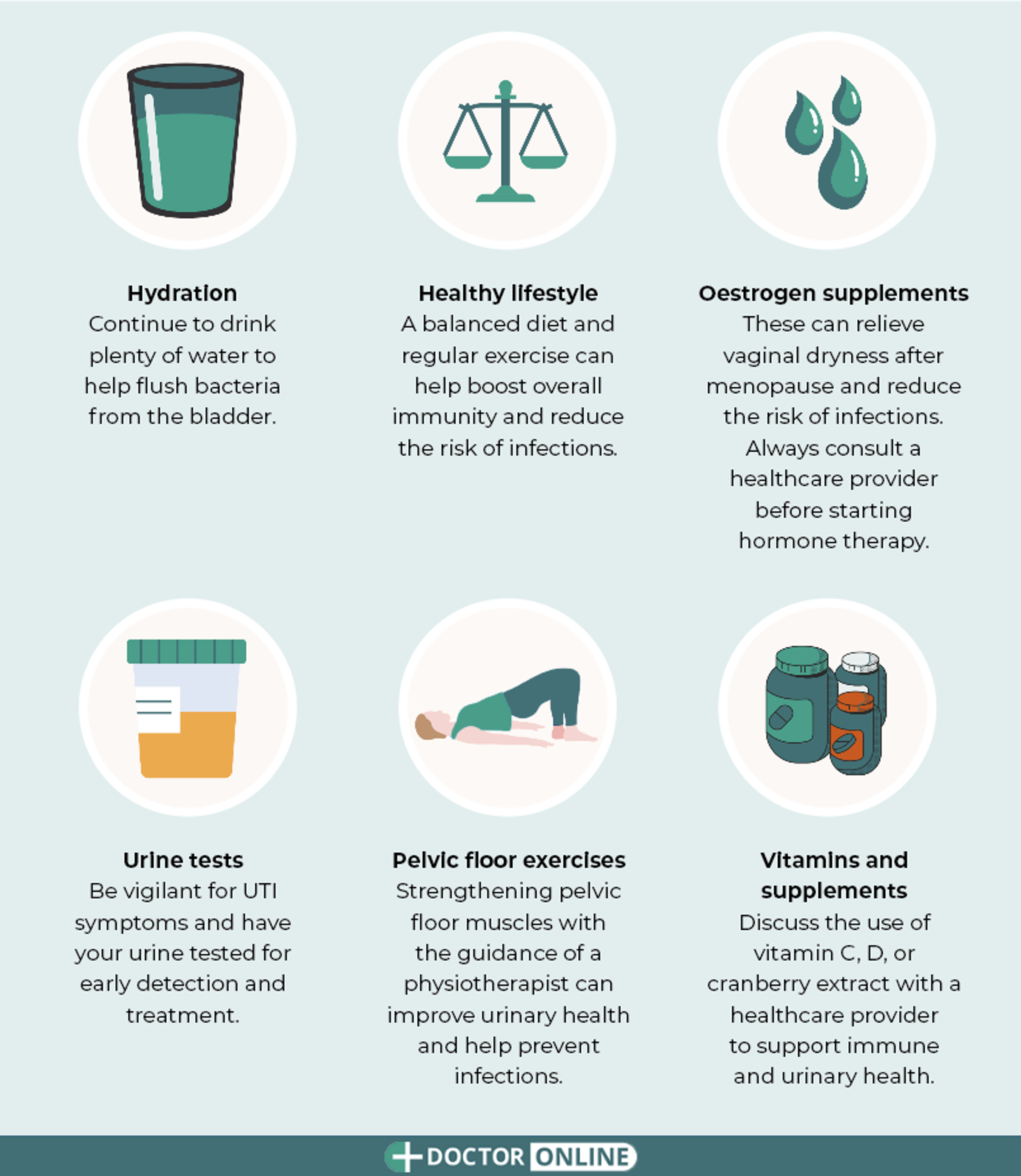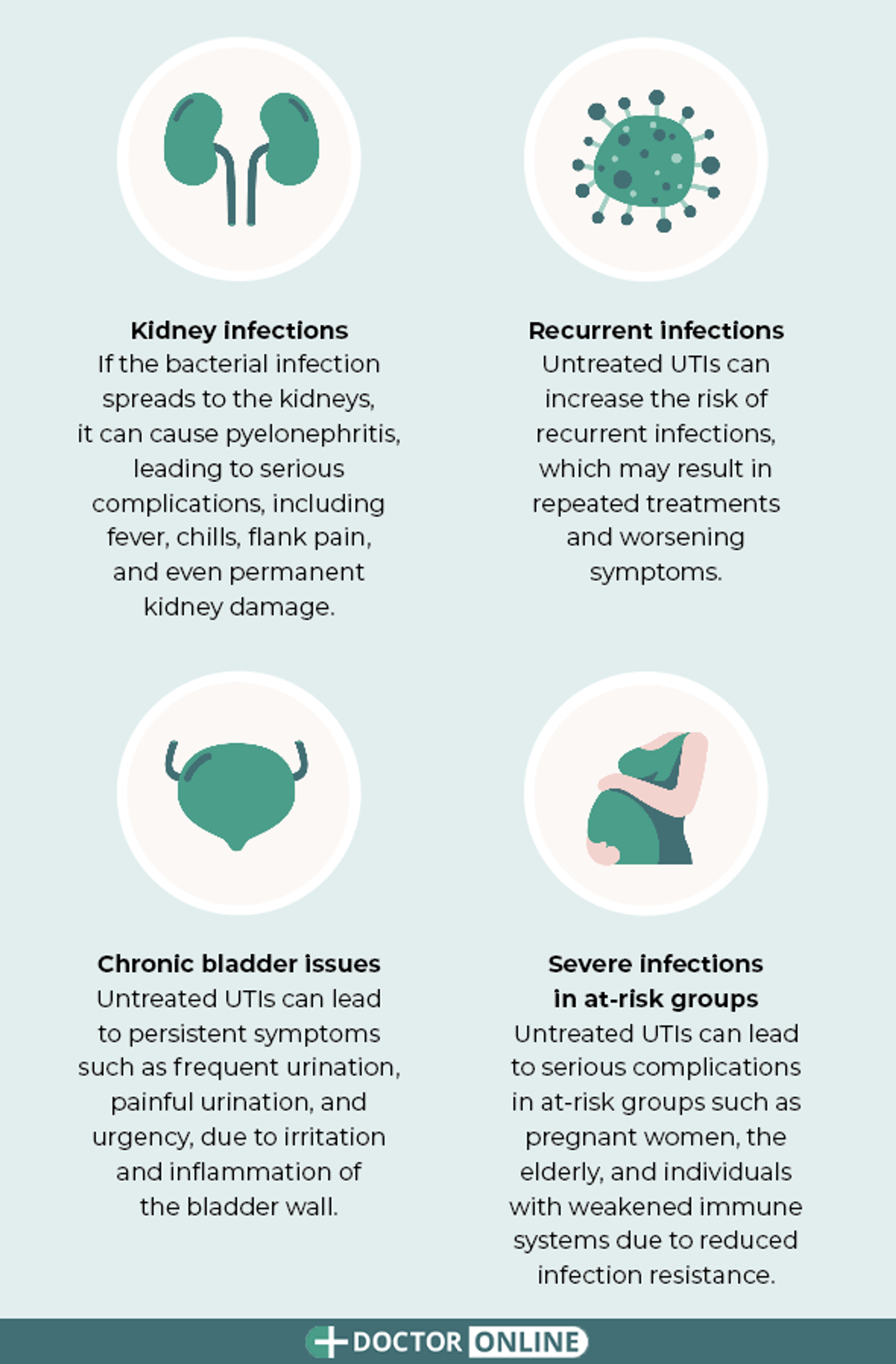
- Urinary tract infection
The importance of prevention and awareness for women with urinary tract infections
Written by: Editors
Modified on:
Urinary tract infections (UTIs), also known as cystitis, are a common condition that primarily affects women. It occurs when the bladder wall becomes inflamed, usually due to bacteria entering the urethra and multiplying in the bladder. While a UTI is typically not life-threatening, it can cause discomfort and pain, and in some cases, lead to more serious complications such as kidney infections. Many women, however, are not always aware of the reasons behind recurring infections. In this article, we aim to provide clarity on this subject.
One of the most common symptoms of a UTI is frequent urination, often accompanied by a burning sensation. Other symptoms include a strong urge to urinate, cloudy or bloody urine, and pain in the lower abdomen or back. In some cases, a fever may develop, which can indicate a more serious infection. If you experience any of these symptoms, it's important to seek advice from one of our partner doctors immediately.
Risk factors for women
In addition to hormonal changes, women have specific anatomical characteristics that increase their susceptibility to UTIs. The shorter length of the female urethra makes it easier for bacteria to enter the bladder, increasing the risk of infection. This anatomical factor, combined with hormonal fluctuations such as those during the menstrual cycle, can further elevate the likelihood of developing a UTI. Additionally, sexual activity can facilitate the introduction of bacteria into the urethra, further increasing the risk of infection.
Women are generally at higher risk of developing a UTI than men due to their shorter urethra, which allows bacteria easier access to the bladder.
Hormonal changes:
- Younger women are at higher risk due to anatomical and hormonal factors. The shorter urethra allows bacteria to enter more easily, while hormonal fluctuations during the menstrual cycle can alter the vaginal pH balance, making it more conducive to bacterial growth. Sexual activity can further increase the risk by introducing bacteria into the urethra.
- Older women may also face an increased risk due to age-related changes. After menopause, declining oestrogen levels can lead to changes in vaginal tissue, weakening the body's natural defences against bacteria. Reduced mobility and underlying health issues may also make it more difficult to urinate regularly, increasing the risk of infection.
Other risk factors include sexual activity, the use of certain contraceptives, a weakened immune system, diabetes, and even tight pelvic muscles that can prevent complete bladder emptying.
Preventive measures
In addition to regular check-ups, it is essential for women to be aware of the risk factors and take preventive measures to avoid developing a UTI. These include drinking plenty of water to flush out the bladder regularly, avoiding irritants such as caffeine and alcohol, wearing cotton underwear, and avoiding perfumed hygiene products in the genital area. For women with pelvic floor issues, physiotherapy can help relax the pelvic muscles and make urination easier, reducing the risk of infection.
Prevention tips for younger women:

Prevention tips for women in menopause or postmenopause:

Since every body is different, individual needs may vary. If you experience recurring UTIs or have specific concerns, it's recommended to consult a specialist for personalised advice and treatment options.
Early diagnosis and treatment
It’s also crucial to seek medical help as soon as symptoms of a UTI appear. Early diagnosis and treatment can prevent complications and speed up recovery.
Complications from untreated UTIs can range from mild to severe and may include:

The link between vaginal yeast infections and UTIs
Vaginal yeast infections and UTIs can influence each other due to shared risk factors such as hormonal changes and disruptions to the vaginal flora. These imbalances can create an environment that encourages bacterial growth, potentially leading to a UTI.
It is important for women to be aware of this connection and seek medical advice if symptoms of either condition appear, to prevent complications.
Conclusion
This article highlights the importance of prevention and awareness for women with UTIs. By understanding the symptoms, risk factors, and preventive measures, women can take proactive steps to maintain urinary health. Early diagnosis and treatment are key to avoiding complications and ensuring a quick recovery. It’s essential to stay alert to symptoms, take preventive steps, and seek medical advice promptly. If UTIs occur frequently or if there are specific concerns, consulting a specialist for personalised advice is recommended.